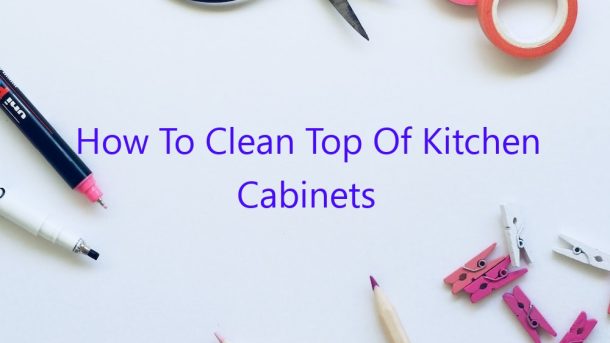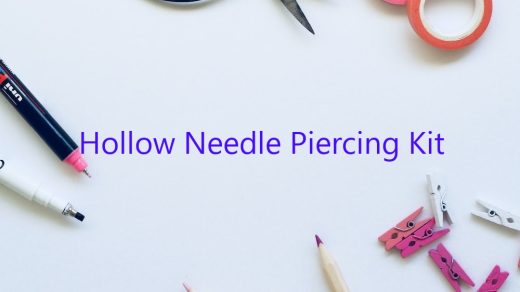Cleaning the top of your kitchen cabinets is a very important task that should be done on a regular basis. Not only does it make your kitchen look clean and organized, but it also helps to prevent dirt, dust, and other contaminants from building up and causing damage. In order to clean your kitchen cabinets, you’ll need some basic supplies and a little bit of elbow grease. Here’s a step-by-step guide on how to clean your kitchen cabinets:
1. Start by removing any items that are on the top of the cabinets. This will make it easier to clean the surface.
2. Next, dampen a cloth with warm water and wipe down the cabinets. Be sure to wipe in the direction of the wood grain to avoid any scratches.
3. If there is any dirt or dust buildup, use a cleaning agent such as dish soap or a multi-purpose cleaner to help remove it.
4. Finally, dry the cabinets with a clean cloth and replace any items that were removed.
By following these simple steps, you can keep your kitchen cabinets looking clean and fresh.
Contents
What should I use to clean the top of my kitchen cabinets?
There are many different products that can be used to clean the top of kitchen cabinets. One option is to use a commercial cleaner, such as a spray-on cleaner that is designed to remove grease and dirt. Another option is to use a natural cleaner, such as a vinegar and water mixture or a baking soda and water mixture.
The best way to determine which cleaner is best for your cabinets is to test it out on a small area. If the cleaner is safe to use on wood, test it out on a hidden area of the cabinet to make sure it does not damage the finish. Once you have found a cleaner that you are happy with, use a soft cloth to apply the cleaner to the cabinet top. Rub the cloth in a circular motion to remove any dirt or grease. Wipe away any excess cleaner with a clean, dry cloth.
How do you get grease off the top of kitchen cabinets?
Getting grease off the top of kitchen cabinets can be a daunting task. However, with a few simple steps, it can be a breeze.
The first step is to gather some supplies. You will need a bucket, hot water, a sponge, dish soap, and a rag.
The next step is to fill the bucket with hot water. Add a few drops of dish soap to the water and stir to combine.
Next, take the sponge and dip it into the soapy water. Rub the sponge over the grease on the cabinets.
If the grease is stubborn and won’t come off, add a little more dish soap to the water.
Once the grease is gone, rinse the cabinets with clean water and dry them with the rag.
How do you clean wood top cabinets?
Wooden cabinets are a beautiful addition to any kitchen, but they require a little more maintenance than other materials. In order to keep them looking their best, it’s important to know how to clean wood top cabinets.
The first step is to gather your supplies. You will need a few different cleaning products, including a degreaser, a cleaner, and a sealant. You will also need a cloth and some water.
The degreaser helps to remove any built-up grease or dirt from the surface of the cabinets. The cleaner helps to remove any stubborn dirt or stains. The sealant helps to protect the wood from moisture and dirt.
Once you have your supplies, you can start cleaning your cabinets. Begin by using the degreaser to clean the surface of the cabinets. Be sure to read the instructions on the degreaser carefully, as each one is different.
Then, use the cleaner to clean any dirt or stains. Again, be sure to read the instructions on the cleaner carefully. Some cleaners are safe to use on wood, while others are not.
Finally, use the sealant to protect the wood. Apply a thin coat of sealant to the surface of the cabinets and allow it to dry.
Be sure to clean your cabinets on a regular basis in order to keep them looking their best.
Why are the tops of my cabinets sticky?
The tops of cabinets are often sticky because of the accumulation of dust, grease, and food particles. This can be a nuisance and can also lead to the growth of mold and bacteria. There are several ways to address this problem.
The first step is to clean the cabinet tops. This can be done with a household cleaner or a mixture of vinegar and water. Be sure to wipe down the cabinets completely and allow them to dry before proceeding to the next step.
If the sticking is due to grease or oil, the next step is to apply a degreaser. There are several commercially available degreasers, or you can make your own by mixing vinegar and baking soda. Be sure to follow the manufacturer’s instructions carefully.
If the sticking is due to dust, the best solution is to install a cabinet liner. This is a plastic or paper liner that is placed inside the cabinet and can be easily cleaned.
If the sticking is due to the growth of mold or bacteria, the best solution is to clean the cabinets with a disinfectant. Be sure to follow the manufacturer’s instructions carefully.
Finally, if the sticking is due to a lack of ventilation, the best solution is to install a ventilation fan. This will help to keep the cabinets dry and free of dust, grease, and food particles.
Can you use Dawn dish soap on wood cabinets?
Can you use Dawn dish soap on wood cabinets?
Yes, Dawn dish soap can be used to clean wood cabinets. However, it is important to test the Dawn dish soap on a small, inconspicuous area of the cabinet first to make sure the Dawn dish soap does not damage the finish on the cabinet.
Can I use Murphy Oil Soap on kitchen cabinets?
Murphy Oil Soap is a household cleaning product that can be used on a variety of surfaces, including kitchen cabinets. It is a degreaser and cleaner that can remove dirt, grease, and grime from surfaces.
Before using Murphy Oil Soap on kitchen cabinets, it is important to test it on a small, inconspicuous area to ensure that it does not damage the finish. If the finish is damaged, Murphy Oil Soap can strip the finish off of the cabinets, leaving them unprotected and susceptible to further damage.
If the Murphy Oil Soap is safe to use on the cabinets, it should be diluted with water before being applied. A small amount of Murphy Oil Soap should be mixed with a large amount of water and then sprayed onto the cabinets. The cabinets should then be wiped down with a clean cloth.
It is important to note that Murphy Oil Soap is a strong cleaner and should not be used too often. It is best to use it sparingly and only when needed.
How do you remove years of grime from kitchen cabinets?
Removing years of grime and grease from kitchen cabinets can seem like a daunting task, but with the right products and techniques it can be a relatively easy process.
The first step is to remove all of the contents of the cabinets and set them aside. Next, use a degreaser to break down the grease and grime build-up on the cabinets. There are many commercial degreasers available, or you can make your own by mixing dish soap and white vinegar in equal parts. Apply the degreaser to the cabinets and let it sit for a few minutes. Then, use a scrub brush to scrub the cabinets clean.
If there is any remaining grease or grime, you can use a stronger cleaner, such as bleach or ammonia. Be sure to read the product label carefully and follow all safety precautions, as these chemicals can be toxic if not used properly. Apply the cleaner to the cabinets and let it sit for a few minutes. Then, use a scrub brush to scrub the cabinets clean.
Finally, rinse the cabinets with clean water and allow them to dry. Replace the contents of the cabinets and enjoy your sparkling clean kitchen cabinets!




